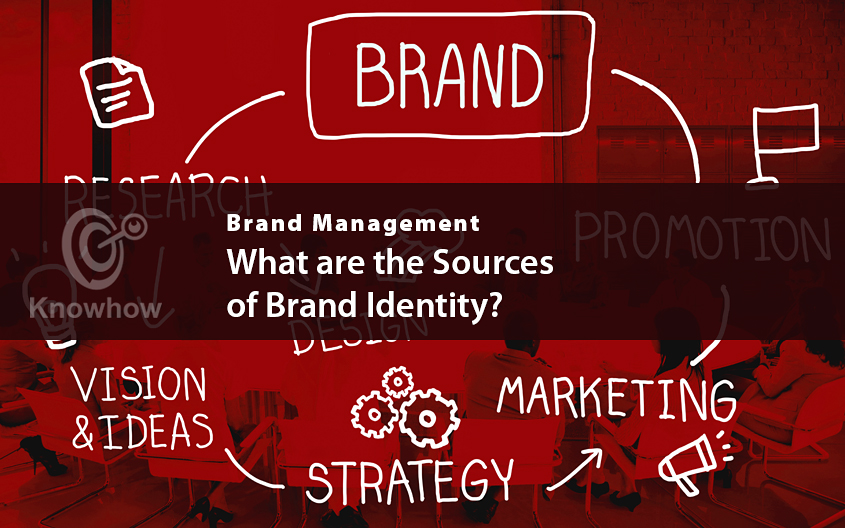
We can identify two main sources of brand identity: symbols and logos. However, apart from those, we also have trademarks that can serve both as a means of recognition and as legal protection.
Symbols
In order to help your target audience remember your services or products, you ought to use symbols as part of your brand identity. These will create a positive connotation in their minds and bring them closer to your brand. Furthermore, symbols can draw the attention to the brand expectations and help you create a corporate image worth remembering. They are also a key component when it comes to brand equity and a worthy addition if you want to build a distinctive brand.
One thing that speaks in favour of symbols is the fact that they are much easier to remember than brand names. Thus, companies are often using them to promote their brands.
You can use various geometric shapes, as well as logos and even people for your symbols. Moreover, companies are known to use sketches and cartoon images as well, and even animals. Take for example Duracell, which features a bunny rabbit, or FedEx that uses an arrow as a symbol. In terms of symbols, anything goes, but they have to be exceptionally memorable.
The use of brand symbols is desirable, as they serve to attract attention and emphasise a brand’s personality. Thus, if the symbol is representing a brand in a certain way, it’s possible to deduce which brand it is just by looking at it. It’s also possible to understand what the brand stands for just from its symbol.
Logos
Apart from symbols, we also have logos. Logos are actually graphic images or symbols that serve as a representation of a certain company, service, or product. They are what the customers most often see when they’re in contact with a certain brand. For example, the three stripes Adidas uses to gain brand recognition.
In any case, a logo should be:
- Simple
- Easily distinguishable
- Practical (so that the company can use it everywhere)
- Impactful
- Memorable
- Easily recognisable, no matter if it’s shown in full colours, in a limited colour scheme, or in black and white
- A reflection of the company behind it
- Easily linkable to the company by the customers and capable of inspiring trust
- Able to keep its shape when printed on fabric or other materials
- A portrayal of all the values the company stands for, as well as its goals and missions
Every logo should have:
- A logotype, which features the company’s name. It’s usually short, but the company can also use a longer version of its name. For example, Hyatt.
- An icon that shows the company’s market position; a visual symbol of sorts, like LIC “hands”
- A slogan, which is certainly the best way of getting your message across. One of the most well-known slogans is Nike’s “Just do it”.
Trademarks
Lastly, we have trademarks, which are unique designs or symbols that help people instantly identify a brand. Every renowned brand either has or should have a trademark so that its customers know that they are getting quality products or services.
In essence, a trademark is an indicator of the commercial source of a certain service or product. Furthermore, it can also help form brand equity. Ergo, it must be original and carefully chosen.
Three symbols indicate a trademark:
- ™, which indicates an unregistered trademark. It’s often used for promotion or for branding goods.
- SM, which also indicates an unregistered trademark, but this time, it’s a service mark.
- ®, which indicates a registered trademark.
Registering a trademark
In some countries, you have to register trademarks if you want to keep your exclusive rights to it. Otherwise, the brand name can be easily declared to be generic. As such, it cannot enjoy the trademark protection. Still, there are certain names that cannot be a trademark, for example, Vaseline.
Nevertheless, if you are thinking about registering a trademark, these guidelines may help you out:
- Opt for formal trademark registration
- Always use the trademark as an adjective, never as a verb or a noun
- Make sure your spelling is correct
- Challenge those who try to misuse your trademark, especially your competitors
- Make sure the first letter of the trademark is capitalised. Moreover, it if appears in point, make it stand out from the rest of the text.
Related content:
Brand Management Knowhow – learn more about branding with our collection of educational articles.
From corporate branded tote bags, printed business pens, mugs, water bottles, face masks, eco-friendly giveaways, through to logo printed clothing and custom notebooks, toys and novelties, outdoor leisure products, here at GoPromotional we believe that you are sure to find the perfect UK custom printed merchandise to help build your brand.
If however, you require further information or have any specific questions, don’t hesitate to give a member of our experienced team a call on 0800 0148 970 or simply email us today.






